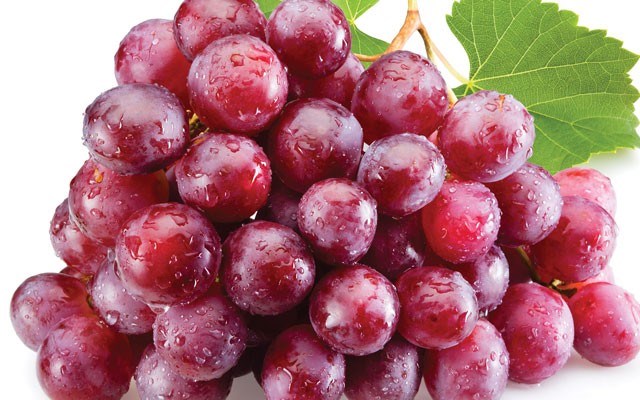There's a time when a smoky flavour is a welcome addition to a food or drink, like in barbecued meats, a savoury snack or even some beers.
But no one wants it seeping into wine.
But with forest fires leaving vineyards susceptible to smoke damage, a team at UBC's Okanagan campus is studying the issue.
Assistant professor of chemistry Wesley Zandberg, PhD student Matthew Noestheden and research associate Eric Dennis worked together to expose Cabernet Franc grapes to smoke simulating the effects of the British Columbian wildfires last year and recently published their results as part of a "pilot study."
Zandberg said naturally smoky flavour in other food and drink helped reseachers understand what to look for.
"We know what to look for in fruit that would indicate the presence of smoke, but the problem is these compounds are indeed produced by burning wood and they get into the grapes OK, but they don't stay that way inside the grape," he said. "(The grape) converts them to forms that have sugars attached to them and that makes them not detectable by any instrumental technique that's out there. It also makes them not tasteable and you can't smell them."
No issues with that, right?
"The problem is that when you add yeast to the grapes, the yeast has the necessary enzymes, at least in part, to cleave the sugars from these compounds and make them perceptible again," Zandberg said. "You can see the big risk for wineries. They hire a crew of 60 people to work 24 hours a day to pick tons of grapes that all taste fine, but when you crush and ferment (them), suddenly, it produces this product that tastes disgusting.
"You've picked all that at a loss and you've gutted all your winery resources."
Zandberg noted much of the research into smoke taint has been done in Australia, which has wildly different vegetation. He added that, to this point, smoke taint has been a bigger problem Down Under with the economic impact hitting nine figures after a particularly smoky year in 2009.
However, with those prior studies as a base, the UBCO trio had a couple areas of focus.
"The first one is that Australian cases use Australian fuel sources, which in their case was mostly barley straw and eucalyptus trees, neither of which burn in a forest fire in B.C. We know that the types of compounds produced in smoke differ, at least in part, based on the different source of fuel," said Zandberg.
Another factor he stressed was that many other studies operated either without a control, or an inadequate one, with the comparative grapes coming from drastically different areas. The distance between the smoky and untainted grapes was just a few metres so they strove to compare grapes to grapes, as it were.
"We know you can take a merlot from one vineyard and a merlot from another vineyard and the wine is completely different. Part of the reason for that is that they're grown in different conditions," he said. "I don't think it's a very good control to compare a bunch of smoked grapes in one place to non-smoke grapes from 100 miles down the road, or to a vintage from a year earlier."
The research was supported by Supra Research and Development, which is looking to "provide analytical services to the local wine and grape industry," Zandberg said. Other boosters are the BC Wine Grape Council and the Natural Sciences and Engineering Research Council.
Zandberg said while some companies claim to have the ability to test for smoke taint, none have the ability to find the proverbial smoking gun when they're "attached to a whole complex array of little sugars that aren't detectable until fermentation."
Zandberg added that at harvest, time is of the essence, so if a winery opted to do a small batch to be tested, they'd rot on the vine or ferment after being picked in the meantime.
"The industry needs a hard answer and they need it early," he said.
The team also found that irrigation systems are not effective and that smoke can't be washed off with water. They'll continue with testing other solutions and preventative measures, but Zandberg is admittedly not optimistic.
Other future research includes searching for new compounds that may be the cause (the team is up to about 10 from two), as well as factoring in human smell and taste perceptions.
"How can we connect what my analytical instruments in the lab measure to what your tongue tastes or your nose smells?" Zandberg said, noting that's a work in progress.
As well, the team found a mystery in a bottle currently available in stores.
"We find that the levels of these smoky compounds, in some instances, are 1,000 times more concentrated than the levels that are usually considered to be objectionable.
"And yet, the wine tastes great."
Zandberg noted that it seems vanillin, from the vanilla-bean plant, can mask some of the compounds.
"The bigger picture is what we're working on right now," he said.
And despite the forest fires that raged all over the province, there's some good news for wine drinkers — last year doesn't seem to have been a write-off.
"There's nothing we've seen in any of the grapes we've tested to suggest that there's going to be a problem this year," Zandberg said. "I think the smoke was all too high, or too old, or had travelled too far."




